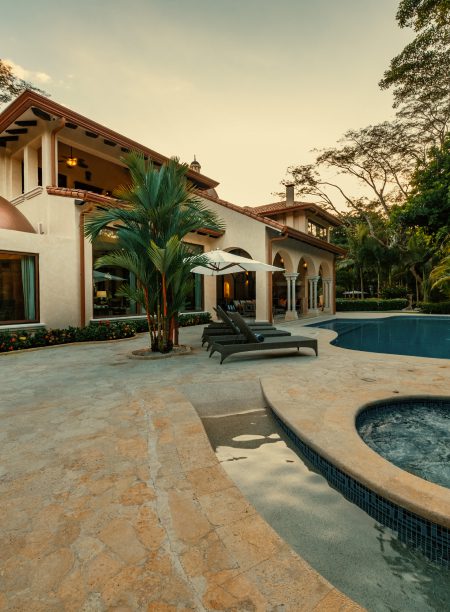Costa Rica is the ultimate travel fantasy for many, and the reason lies in the tropical space created by its lush rainforests, beautiful beaches, and vibrant wildlife. Yet many think that enjoying this haven need not be costly. Only experts know that with planning and insider tips, you can experience the natural beauty and rich culture of the country without splurging.
Confused how? Well, here is your Costa Rica travel guide with insider tips on maximizing your experience and minimizing your budget, and that too without much stress.
1. Eat at Local Sodas
Avoid the tourist-favorite restaurants and dine where the locals eat, i.e., at “sodas.” These tiny, family-owned restaurants serve traditional Costa Rican cuisine at a fraction of the cost you’d find elsewhere.
A standard “casado” plate, which consists of rice, beans, salad, plantains, and your choice of meat, can be had for as little as $5 to $7. Not only will you be saving money, but you’ll also be experiencing an authentic taste of Costa Rican food.
2. Use Public Transport
Costa Rica has a cheap, well-developed public bus network. Although not the quickest way to travel, it’s an excellent way to explore the most beautiful country of Central America and communicate with the locals.
For longer trips, take the comfortable and inexpensive long-distance buses. Be vigilant with your belongings, and do not store valuable items in overhead racks. If you are cautious and a little careful, you will never question, “Is Costa Rica safe?”
3. Select the Correct Airport
Costa Rica has two large international airports: Liberia (LIR) and San José (SJO). Depending on your travel plans, flying into one or the other might be cheaper.
If you’re heading to visit the Guanacaste Province or the Nicoya Peninsula, arriving at Liberia can save you money and time on transport.
4. Use Local Currency
Although U.S. dollars are universally accepted, use the Costa Rican currency, the colón, whenever possible to receive better bargains. Exchange rates at restaurants and stores won’t be in your favor, and you will be given change in colones anyway.
Obtain colones from banks’ ATMs or exchange cash in official banks to prevent confusion and avoid losses.
5. Go to Farmers’ Markets
Venturing out to local farmers’ markets, or “ferias,” is a cultural experience and a cost-saving tactic. You’ll discover fresh produce, vegetables, cheeses, and other local goods at lower prices than supermarkets. It’s also an excellent way to help local farmers and artisans.
6. Look for Free and Low-Cost Activities
Not every memorable experience costs an arm and a leg. Costa Rica has many free or low-cost activities:
- Beaches: Most of Costa Rica’s beaches are public and open for free.
- Hiking: Most national parks in Costa Rica have low entrance fees, and some of their trails are free. For example, the Arenal Observatory Lodge has free trails for its visitors.
- Wildlife Watching: Destinations such as the Rio Tarcoles Bridge allow visitors to observe crocodiles without paying an entrance fee.
- Cultural Sites: Visit local towns, markets, and festivals to experience Costa Rican culture at little or no expense.
7. Drink Tap Water Where Safe
Tap water is safe to drink in most areas of Costa Rica, particularly in cities and major tourist spots. Refilling a reusable water bottle can save you money and help minimize plastic use. In more rural areas, though, it’s best to stick with bottled or filtered water.
8. Travel During the Green Season
It is indeed true that every season is the best time to visit Costa Rica. However, the green season, May to November, is the off-season. During these months, you’ll get lower rates on hotels and tours, and the scenery is lush and green. Although there might be the odd rain shower, these are usually brief and can provide a welcome respite from the sun.
9. Use Budget Accommodations
Hostels, guesthouses, and budget resorts are abundant in Costa Rica. Some provide clean, cozy rooms with shared kitchens where you can cook your own meals, avoiding spending money on the fancy restaurants in Costa Rica. Further, sleeping in smaller, less touristy towns can give you a more genuine experience and be cheaper.
10. Avoid Costly Tours
Most of the adventure activities in Costa Rica come with heavy prices. Tours such as zip-lining, waterfall tours, and many other guided tours are fun but extremely expensive as well. Balance your schedule with self-guided excursions, including hiking, beach time, and visiting nearby towns. This way, you can enjoy the splendor of Costa Rica without breaking the bank.
All-Inclusive Villa Firenze Package is a Savior
Firenze Villa offers an extraordinary all-inclusive deal for vacationers looking to combine luxury with affordability. Located on the Los Sueños Resort & Marina Eco Golf Estates, the 9,500-square-foot villa is tastefully crafted to replicate the Italian palazzo of elegance.
Features:
- Private Helipad: Travel in elegance and ease.
- Infinity Pool & Jacuzzi: Unwind amid breathtaking rainforest vistas.
- Personal Chef: Gourmet cuisine your way.
- Entertainment Facilities: X-golf simulator, game room, and so on.
Booking Villa Firenze means immersing yourself in luxury, with the added advantage of bundled services, which deliver both comfort and value for your Costa Rican getaway.
Final Thoughts
Traveling through Costa Rica on a budget is feasible with some planning and a willingness to embrace local experiences. By eating at sodas, using public transportation, and seeking out free activities, you can enjoy the richness of Costa Rican culture and nature without stretching your wallet.
And for those occasions when you crave a little luxury without the inconvenience, Villa Firenze is poised to provide an all-inclusive experience blending comfort, convenience, and value.
Live the “Pura Vida” lifestyle and get the most out of your Costa Rican adventure.

























